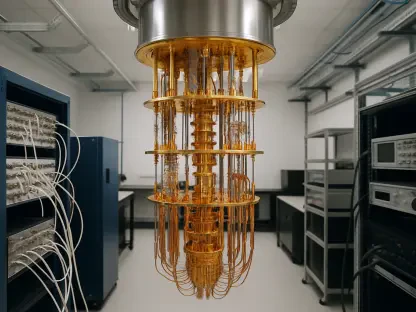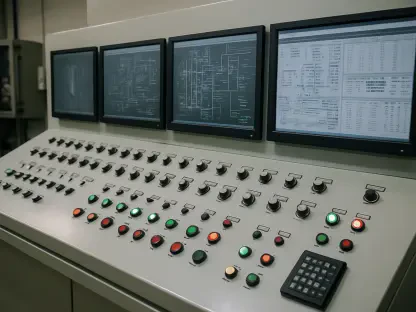In a world where seamless connectivity and optimized network performance are increasingly crucial, SoftBank’s latest initiative aims to revolutionize the telecom landscape through advanced AI-RAN technology. Emphasizing the transformative potential of artificial intelligence within radio access networks, SoftBank, in collaboration with Nvidia and other technological giants, has undertaken a bold venture to enhance network efficiency and economic viability. As the anticipation for this groundbreaking initiative builds, one can’t help but wonder about the myriad possibilities unfolding over the next few years.
Integration of AI-RAN with Nvidia’s Platforms
Delivering Enhanced Network Performance and Cost Efficiency
A year after the AI-RAN Alliance announcement, SoftBank is showcasing the practicality of its AI-RAN efforts alongside Nvidia at the Mobile World Congress (MWC). Central to this effort is the AITRAS solution, an AI-RAN-based platform designed to incorporate both AI and RAN workloads using Nvidia’s accelerated computing platforms. By leveraging AI’s capabilities, SoftBank aims to significantly improve network performance and achieve substantial cost reductions. The plan is to expand AITRAS on a global scale, going beyond SoftBank’s own commercial network by the year 2026, a bold objective signaling strong ambitions for the future of telecom infrastructure.
To strengthen the commercial viability of AITRAS, SoftBank has recently partnered with Fujitsu to integrate central unit (CU) functions on Nvidia’s cutting-edge Grace CPU Superchip platform. This collaboration is a pivotal step towards bringing the theoretical benefits of AI-RAN to practical, real-world application. By incorporating distributed RAN (D-RAN) functionalities and deploying both CU and distributed unit (DU) functions on a single G##00 Grace Hopper Superchip, SoftBank is advancing the overall integration of AI within telecom infrastructures. This development is expected to make a substantial impact on network efficiency in the near future.
Deployment Architectures and Trial Plans
The AITRAS framework is constructed with dual deployment architectures: centralized RAN (C-RAN) and distributed RAN (D-RAN). C-RAN separates CU and DU functions across different servers, allowing for optimized usage of base station resources. On the other hand, D-RAN processes CU and DU on the same server, ensuring simplified hardware requirements. SoftBank has meticulously planned the outdoor testing of these architectures, set to take place between April 2025 and March 2026. This phase will be followed by rigorous performance verifications to ensure all theoretical benefits translate smoothly into real-world applications.
The central distinction between these two architectures lies in their hardware deployment strategies. With C-RAN, the separation of functionalities across servers enables more effective resource management and flexibility, which is particularly valuable in high-density urban environments. Meanwhile, the D-RAN approach’s on-site integration simplifies operational complexities and can be more suitable for rural or isolated areas where infrastructure is less dense. The planned outdoor tests will be crucial in validating these architectures under varied conditions, providing essential insights that will guide further refinements and optimizations.
Industry Partnerships
Collaboration with Ericsson, Nokia, and Red Hat
Another vital component of SoftBank’s AI-RAN initiative is its collaboration with major industry players such as Ericsson, Nokia, and Red Hat. By signing a Memorandum of Understanding (MoU) with Ericsson, SoftBank aims to push the boundaries of AI in RAN through cooperative research efforts. One of the noteworthy achievements in this collaboration includes running Ericsson’s cloud RAN software on Nvidia’s Grace CPU platform, a significant step towards realizing the AI-RAN vision. These collaborations exemplify not only the practical applications of AI within the RAN framework but also the collaborative spirit driving innovation in the telecom industry.
Equally important is SoftBank’s partnership with Nokia, which has resulted in enhancements to the AITRAS orchestrator. The updated orchestrator now supports the seamless operation of AI and virtualized RAN (vRAN) on a single server, facilitating dynamic resource optimization. This feature addresses one of the core objectives of the AI-RAN initiative: efficient resource allocation. By integrating these technologies, SoftBank and Nokia have demonstrated the potential for a more streamlined and effective telecom infrastructure. This coordinated effort emphasizes the synergy between AI innovation and practical telecom needs.
Red Hat and the Focus on Power Optimization
SoftBank’s collaboration with Red Hat focuses on optimizing power consumption for vRAN and AI applications, particularly within data centers. Using AITRAS’s orchestrator, this partnership has developed monitoring solutions that dynamically allocate resources based on power usage and other critical metrics. This optimization ensures that resources are utilized more efficiently, leading to energy savings and reduced operational costs. Furthermore, these innovations align closely with broader industry trends towards sustainability and environmental responsibility, reflecting the growing importance of eco-friendly practices in cutting-edge technological advancements.
This focus on power optimization is pivotal in an era where data centers are becoming the backbone of the digital world, and their energy consumption is a significant concern. By addressing power consumption through advanced AI-driven solutions, SoftBank and Red Hat are setting a new standard for efficiency in telecom operations. This initiative not only underscores the importance of responsible energy use in tech advancements but also highlights how collaborative efforts can drive progress towards more sustainable industry practices, benefiting both the environment and the bottom line.
Research and Practical Applications
Testing Key AI Use Cases in RAN
In addition to partnerships with industry giants, SoftBank has conducted extensive research on “AI for RAN,” testing critical use cases to highlight the practical benefits of AI integration within telecom infrastructure. Three key use cases have been the focal point of this research: Uplink Channel Interpolation, Sounding Reference Signals Prediction, and AI-driven MAC Scheduling. Each of these use cases has shown promising results, demonstrating AI’s potential to significantly enhance RAN performance. Particularly notable is the 20% improvement in uplink (UL) user throughput in poorly connected network areas, showing a marked advantage over traditional technology.
The improved performance of the UL user throughput is a strong testament to the capabilities of AI in addressing network inefficiencies. By optimizing signal prediction and scheduling within the RAN, AI-driven solutions can provide more reliable and robust connectivity, even in challenging environments. These improvements are crucial for delivering consistent and high-quality telecom services, particularly in areas where traditional solutions fall short. By focusing on these specific use cases, SoftBank’s research is paving the way for widespread AI applications in telecom, with tangible benefits evident in early tests.
Continued Investment and Future Prospects
In an era where seamless connectivity and optimized network performance are essential, SoftBank’s newest initiative aims to transform the telecom industry using cutting-edge AI-RAN technology. Highlighting the revolutionary potential of artificial intelligence within radio access networks, SoftBank, partnering with Nvidia and other tech leaders, has embarked on an ambitious project to boost network efficiency and economic feasibility. This collaboration focuses on leveraging AI to streamline network operations, reduce costs, and enhance overall performance. As excitement mounts for this innovative venture, it’s intriguing to consider the numerous possibilities that may emerge in the next few years. How this technology will shape the future of telecommunications and influence the global landscape is a compelling prospect. The integration of AI into telecom infrastructure signifies a significant step forward, promising profound impacts on connectivity, user experience, and the economic dynamics of the industry.









